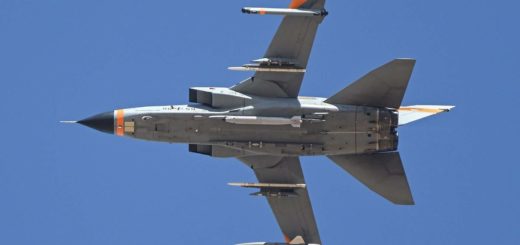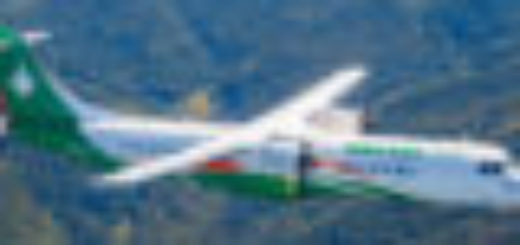South Korea Targets a 15 Billion Dollar KF-21 Fighter Partnership With the UAE
{loadposition bannertop}
{loadposition sidebarpub}
South Korea is courting the United Arab Emirates with a proposed 15 billion dollar defense package centered on the KF-21 Boramae fighter jet, tied to joint production and co-export plans. If finalized, the deal could give Abu Dhabi a next-generation multirole aircraft while expanding Seoul’s global defense footprint.
According to the Bloomberg agency, on November 19, 2025, South Korea is courting the United Arab Emirates with a prospective $15 billion arms package that puts the KF-21 Boramae fighter jet at center stage. President Lee Jae Myung’s visit to Abu Dhabi, timed with the Dubai Airshow, produced a political commitment to build a joint value chain covering development, local production and co-export of key systems. Lee’s chief of staff, Kang Hoon-sik, said this model could unlock more than 15 billion dollars in contracts for Korean firms, while Emirati air force officers have already toured Korea Aerospace Industries’ facilities and even flown in a KF-21 prototype.Follow Army Recognition on Google News at this link
South Korea’s KF-21 Boramae is a twin-engine 4.5-generation fighter with an indigenous AESA radar, reduced-signature design and 7-ton payload for long-range air superiority and precision strike (Picture source: Kai).
Seoul is offering Abu Dhabi a stake in the KF-21 ecosystem, with the potential to assemble airframes in the UAE, integrate Emirati or EDGE Group subsystems and campaign the aircraft jointly across the Middle East and Africa. In practical terms, that could give the UAE not only a new frontline fighter, but also a share of long-term sustainment, upgrade and export revenue streams in a region where demand for non-U.S., non-Russian fast jets is quietly rising.
The KF-21 sits in the high end of the 4.5-generation spectrum, aiming to outperform F-16 class fighters while staying cheaper and less politically constrained than full fifth-generation designs. The twin-engine airframe is powered by two GE F414 turbofans, giving a reported top speed close to Mach 1.9 and a maximum take-off weight of around 25.4 tons, with 10 external hardpoints and roughly 7.7 tons of payload. The design uses area-ruled shaping, canted tails, aligned edges and radar-absorbent materials to reduce frontal radar cross section, even though weapons are initially carried externally.
At the heart of the jet is a domestically developed active electronically scanned array radar from Hanwha Systems, with around a thousand transmit-receive modules and detection ranges in the 150 to 200 kilometer band against fighter-size targets. The sensor suite is rounded out by an infrared search and track system, an integrated electronic warfare package and modern datalinks in an open-architecture avionics backbone designed to support future sensor fusion. Block I aircraft are optimized for air-to-air roles with beyond-visual-range engagements, while Block II, now planned for early 2027, accelerates the addition of full air-to-ground capability and prepares space for future internal weapon bays.
On weapons, Korea’s roadmap envisages the KF-21 carrying Meteor or AIM-120 class beyond-visual-range missiles, IRIS-T or Sidewinder-type short-range missiles, JDAM and other guided bombs, stand-off cruise missiles and anti-ship weapons for maritime strike. For the UAE, which already flies F-16E/F Block 60 and Mirage 2000-9 fleets, the Boramae would bring a multirole platform able to plug into existing Western munitions stocks while giving Abu Dhabi leverage to integrate indigenous weapons over time. Flight-testing since 2022 has steadily expanded the envelope, but there are still integration and schedule risks around weapons certification and software, and Indonesia’s on-and-off participation in the program remains a cautionary note for any future foreign partners.
In a Gulf scenario focused on deterring Iran, the KF-21’s AESA radar, networking and twin-engine safety margin would support long-range air policing over the Strait of Hormuz, escort missions for tankers and ISR platforms, and precision strike against coastal missile batteries or drone launch sites. For maritime interdiction from the Gulf of Oman to Bab el-Mandeb, a two-seat variant, paired with long-range anti-ship missiles, could serve as a strike leader coordinating mixed packages of F-16E/Fs and UAVs. In harsh desert conditions, the redundancy of two engines and a robust undercarriage are not trivial selling points compared to single-engine options.
Politically, the Korean proposal arrives in a space left open by the collapse of the F-35 track. Abu Dhabi suspended negotiations on a 23 billion dollar package of F-35s and advanced drones in 2021, after Washington linked the sale to restrictions on Huawei equipment and broader concerns over Emirati technology ties with China. Russia’s bid to push the Su-57E faces the headwinds of sanctions, battlefield losses in Ukraine and the absence of any confirmed export customer, leaving its true sustainment cost and mission-capability rate largely opaque. In contrast, a Korean platform with U.S. engines but Korean mission systems offers high capability with fewer political strings and a cleaner sanctions environment.
The KF-21 proposal also rests on a foundation of steadily thickening South Korea-UAE ties. Since establishing diplomatic relations in 1980, the two countries have cooperated on nuclear energy at Barakah, construction and strategic investment. A small South Korean special forces contingent, the Akh unit, has long rotated through the UAE in a combined training role, and in 2022, Abu Dhabi signed a roughly 3.5 billion dollar contract for the Cheongung II (KM-SAM) medium-range air defense system, at the time Seoul’s largest single arms export. A new joint declaration issued this week explicitly lists national defense and defense technology among priority pillars of the relationship.
For Seoul, the stakes go beyond one Gulf customer. South Korea is already ranked around 10th worldwide in arms exports and President Lee has publicly set a goal of becoming the world’s fourth-largest defense power by 2030, using platforms like K2 tanks, K9 howitzers, Chunmoo rocket launchers and FA-50 light fighters as spearheads. Korean manufacturers have built a reputation for rapid delivery, aggressive pricing and a willingness to localize production, from howitzers in Poland and Romania to missile systems in the Middle East. Anchoring the KF-21 in the UAE would give Seoul a high-visibility fighter reference customer in a region that still shapes global perceptions of tactical airpower.
The F-35 remains unmatched in all aspects of stealth and sensor fusion, but for Abu Dhabi, it currently carries unacceptable political conditions and intrusive end-use monitoring. Rafale F4 and Eurofighter Typhoon offer formidable capability, including mature long-range weapons and electronic attack options, yet they often come with higher unit and lifecycle costs and more rigid industrial offers. France’s Rafale line is heavily committed to India, Greece and the UAE’s own existing order, while European industry is struggling to ramp capacity for new customers. Russia’s Su-57E, on paper, promises stealth and super-maneuverability, but sanctions and limited production capacity make it a risky bet for a country that prizes availability.
Written by Evan Lerouvillois, Defense Analyst, Army Recognition Group.
Evan studied International Relations, and quickly specialized in defense and security. He is particularly interested in the influence of the defense sector on global geopolitics, and analyzes how technological innovations in defense, arms export contracts, and military strategies influence the international geopolitical scene.

{loadposition bannertop}
{loadposition sidebarpub}
South Korea is courting the United Arab Emirates with a proposed 15 billion dollar defense package centered on the KF-21 Boramae fighter jet, tied to joint production and co-export plans. If finalized, the deal could give Abu Dhabi a next-generation multirole aircraft while expanding Seoul’s global defense footprint.
According to the Bloomberg agency, on November 19, 2025, South Korea is courting the United Arab Emirates with a prospective $15 billion arms package that puts the KF-21 Boramae fighter jet at center stage. President Lee Jae Myung’s visit to Abu Dhabi, timed with the Dubai Airshow, produced a political commitment to build a joint value chain covering development, local production and co-export of key systems. Lee’s chief of staff, Kang Hoon-sik, said this model could unlock more than 15 billion dollars in contracts for Korean firms, while Emirati air force officers have already toured Korea Aerospace Industries’ facilities and even flown in a KF-21 prototype.
Follow Army Recognition on Google News at this link
South Korea’s KF-21 Boramae is a twin-engine 4.5-generation fighter with an indigenous AESA radar, reduced-signature design and 7-ton payload for long-range air superiority and precision strike (Picture source: Kai).
Seoul is offering Abu Dhabi a stake in the KF-21 ecosystem, with the potential to assemble airframes in the UAE, integrate Emirati or EDGE Group subsystems and campaign the aircraft jointly across the Middle East and Africa. In practical terms, that could give the UAE not only a new frontline fighter, but also a share of long-term sustainment, upgrade and export revenue streams in a region where demand for non-U.S., non-Russian fast jets is quietly rising.
The KF-21 sits in the high end of the 4.5-generation spectrum, aiming to outperform F-16 class fighters while staying cheaper and less politically constrained than full fifth-generation designs. The twin-engine airframe is powered by two GE F414 turbofans, giving a reported top speed close to Mach 1.9 and a maximum take-off weight of around 25.4 tons, with 10 external hardpoints and roughly 7.7 tons of payload. The design uses area-ruled shaping, canted tails, aligned edges and radar-absorbent materials to reduce frontal radar cross section, even though weapons are initially carried externally.
At the heart of the jet is a domestically developed active electronically scanned array radar from Hanwha Systems, with around a thousand transmit-receive modules and detection ranges in the 150 to 200 kilometer band against fighter-size targets. The sensor suite is rounded out by an infrared search and track system, an integrated electronic warfare package and modern datalinks in an open-architecture avionics backbone designed to support future sensor fusion. Block I aircraft are optimized for air-to-air roles with beyond-visual-range engagements, while Block II, now planned for early 2027, accelerates the addition of full air-to-ground capability and prepares space for future internal weapon bays.
On weapons, Korea’s roadmap envisages the KF-21 carrying Meteor or AIM-120 class beyond-visual-range missiles, IRIS-T or Sidewinder-type short-range missiles, JDAM and other guided bombs, stand-off cruise missiles and anti-ship weapons for maritime strike. For the UAE, which already flies F-16E/F Block 60 and Mirage 2000-9 fleets, the Boramae would bring a multirole platform able to plug into existing Western munitions stocks while giving Abu Dhabi leverage to integrate indigenous weapons over time. Flight-testing since 2022 has steadily expanded the envelope, but there are still integration and schedule risks around weapons certification and software, and Indonesia’s on-and-off participation in the program remains a cautionary note for any future foreign partners.
In a Gulf scenario focused on deterring Iran, the KF-21’s AESA radar, networking and twin-engine safety margin would support long-range air policing over the Strait of Hormuz, escort missions for tankers and ISR platforms, and precision strike against coastal missile batteries or drone launch sites. For maritime interdiction from the Gulf of Oman to Bab el-Mandeb, a two-seat variant, paired with long-range anti-ship missiles, could serve as a strike leader coordinating mixed packages of F-16E/Fs and UAVs. In harsh desert conditions, the redundancy of two engines and a robust undercarriage are not trivial selling points compared to single-engine options.
Politically, the Korean proposal arrives in a space left open by the collapse of the F-35 track. Abu Dhabi suspended negotiations on a 23 billion dollar package of F-35s and advanced drones in 2021, after Washington linked the sale to restrictions on Huawei equipment and broader concerns over Emirati technology ties with China. Russia’s bid to push the Su-57E faces the headwinds of sanctions, battlefield losses in Ukraine and the absence of any confirmed export customer, leaving its true sustainment cost and mission-capability rate largely opaque. In contrast, a Korean platform with U.S. engines but Korean mission systems offers high capability with fewer political strings and a cleaner sanctions environment.
The KF-21 proposal also rests on a foundation of steadily thickening South Korea-UAE ties. Since establishing diplomatic relations in 1980, the two countries have cooperated on nuclear energy at Barakah, construction and strategic investment. A small South Korean special forces contingent, the Akh unit, has long rotated through the UAE in a combined training role, and in 2022, Abu Dhabi signed a roughly 3.5 billion dollar contract for the Cheongung II (KM-SAM) medium-range air defense system, at the time Seoul’s largest single arms export. A new joint declaration issued this week explicitly lists national defense and defense technology among priority pillars of the relationship.
For Seoul, the stakes go beyond one Gulf customer. South Korea is already ranked around 10th worldwide in arms exports and President Lee has publicly set a goal of becoming the world’s fourth-largest defense power by 2030, using platforms like K2 tanks, K9 howitzers, Chunmoo rocket launchers and FA-50 light fighters as spearheads. Korean manufacturers have built a reputation for rapid delivery, aggressive pricing and a willingness to localize production, from howitzers in Poland and Romania to missile systems in the Middle East. Anchoring the KF-21 in the UAE would give Seoul a high-visibility fighter reference customer in a region that still shapes global perceptions of tactical airpower.
The F-35 remains unmatched in all aspects of stealth and sensor fusion, but for Abu Dhabi, it currently carries unacceptable political conditions and intrusive end-use monitoring. Rafale F4 and Eurofighter Typhoon offer formidable capability, including mature long-range weapons and electronic attack options, yet they often come with higher unit and lifecycle costs and more rigid industrial offers. France’s Rafale line is heavily committed to India, Greece and the UAE’s own existing order, while European industry is struggling to ramp capacity for new customers. Russia’s Su-57E, on paper, promises stealth and super-maneuverability, but sanctions and limited production capacity make it a risky bet for a country that prizes availability.
Written by Evan Lerouvillois, Defense Analyst, Army Recognition Group.
Evan studied International Relations, and quickly specialized in defense and security. He is particularly interested in the influence of the defense sector on global geopolitics, and analyzes how technological innovations in defense, arms export contracts, and military strategies influence the international geopolitical scene.








